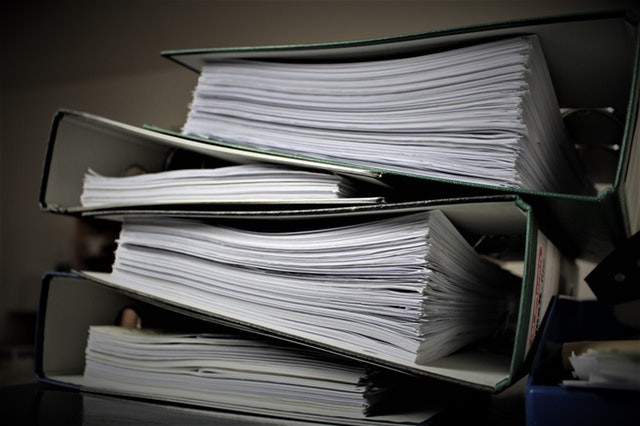The Onus of Documentation: Separating Fact From Fiction
Updated to Reflect New Policies (2022)*** Some of the policies referenced were updated 2021-08-13. This article has been updated and is accurate as of 2022. *** |
What have government policy changes meant for SR&ED documentation?
We have previously discussed how to keep contemporaneous documentation in our posts titled “Why do I need contemporaneous documentation for SR&ED?” and “SR&ED supporting documentation – getting from point A to point B.”
This article will review the CRA’s understanding of “documentation” and highlight the consequences of falling short in this aspect of your SR&ED claim.
CRA’s Understanding of SR&ED Documentation
As described in the T4088, the guide to Form T661 provided by the CRA, the best evidence that a claimant can provide with regard to their SR&ED endeavour is “contemporaneous documentation.” 1
This usually pertains to thorough and methodical reports which are dated, signed, and specific to the work performed. This does not just refer to formal and compiled reports which are pre-dated to match the works performed, but rather any supporting document whatsoever that was signed and filed on the same day as the work performed. The CRA describes contemporaneous documentation as “documents generated as the SR&ED was being carried out”2 which can include “dated documents generated before, during, or immediately after the claimed activities, including planning documents and summary reports, records, and supporting evidence for the claimed work.” 3
While that may represent a significant increase in time dedicated to the daily tracking and compiling of all paperwork and reports related to the SR&ED work, it can mean avoiding a review after the claim has been filed. We, along with most industry experts, advise claimants to assign at least one person or a set team of personnel as SR&ED trackers. Such personnel, aside from their usual responsibilities, would be tasked with pursuing, collecting, collating, and filing everyday reports and supporting documentation. This information would then immediately be added to the project’s or organization’s SR&ED file.
This is why automated time tracking and other supporting software are promoted for use in SR&ED projects, as it sidesteps the need to exhaustingly document and proves the exact time spent by each member of personnel.
Consequences of Ignoring or Undercutting Documentation
One of the best examples to show the importance of contemporaneous documentation is the case of National R&D Inc. v. The Queen, which was contested in the Tax Court of Canada in 2020.4 This particular case was lost by the taxpayer in the TCC and lost on appeal in 2022 in the Federal Court.
National R&D Inc. conducted SR&ED to develop a project tracking system software. The CRA agreed that uncertainty was present and hypotheses were formulated with the aim of reducing the technological uncertainties, however, there was not sufficient documentation to suggest that a scientific and systematic method had been followed in the testing of the hypotheses involved. While there was a Project Timeline document provided to illustrate the activities undertaken and the time spent on each activity, the document was vague and the listed events did not follow a logical progression. The judge stated the document did not make up for the lack of supporting documentation proving a systematic method of investigation or analysis.
As evidenced by the judgment of Gaston Jorré of the TCC in Les Abeilles Service de Conditionnement Inc. v. The Queen,5 the lack of contemporaneous documentation alone is not a condition for SR&ED to be denied recognition and can be replaced by oral evidence provided by the testimony of key, expert personnel involved in the original work. However, in the case of National R&D Inc. v. The Queen, the expert witness testimony, provided by Mr. Amit Saini, did not make up for the lack of documentary evidence .
In the end, the Federal Court factored in the available documentation as well as the testimony of key personnel to determine that:
[74] National has failed to show, on a balance of probabilities, that the procedure adopted in the development of the PTS Project accorded with the total discipline of the scientific method, including the formulation, testing and modification of hypotheses, and that that process resulted in a technological advancement. Further, National was unable to show that a detailed record of the hypotheses tested and results was kept as the work progressed. Therefore, the activities undertaken by National in developing the PTS Project do not constitute SR&ED.6
There have been exceptions when there is a lack of supporting documentation and the case is successful in the court regardless, however in this case the expert witness testimony was not sufficient.
The Onus Of Documentation: The Verdict
In the face of previous judgments, industry experts still recognize that Gaston Jorré’s judgment in the Les Abeilles Service case, is an exception, as judges more often side with the CRA’s decision in the face of absent contemporaneous paperwork.
Finally, the advantage of contemporaneous documentation is that it safeguards the organization’s incentives and future R&D in the face of unpredictable events – such as the loss of key personnel.
It is in the best interests of any company to spend some time every day recording their SR&ED activities rather than battling it out in courts for years to come. For example, something as informal as project brainstorming scribbled on a sheet of paper during a relaxed meeting between key technical personnel should be dated, signed, and filed away on that day.
